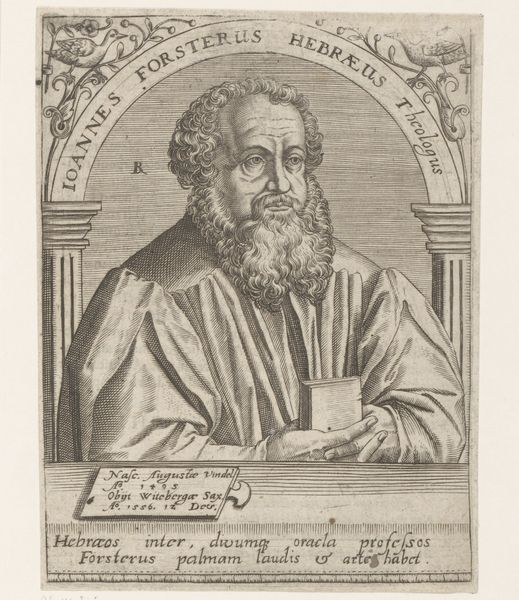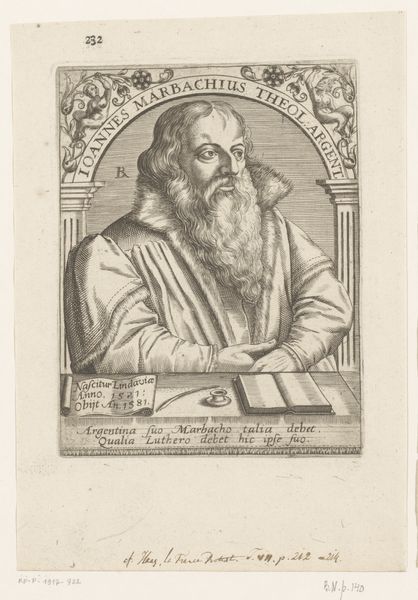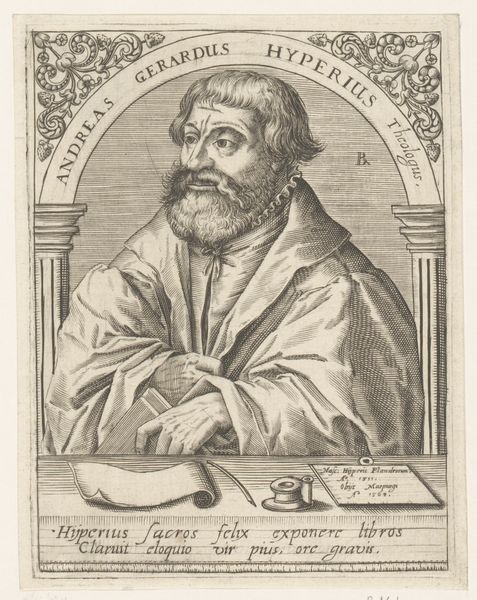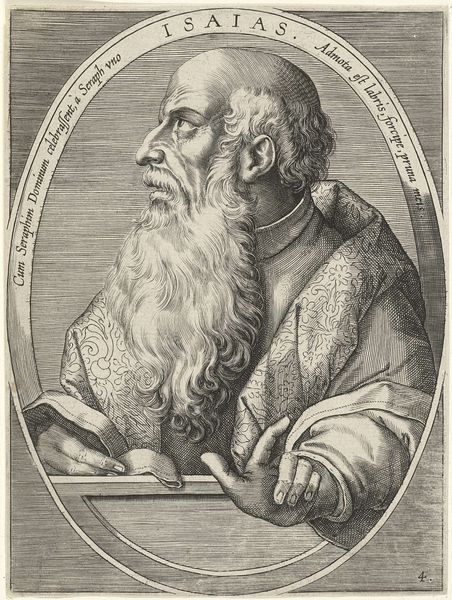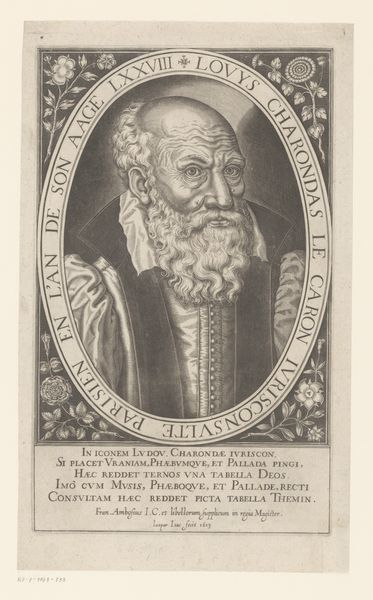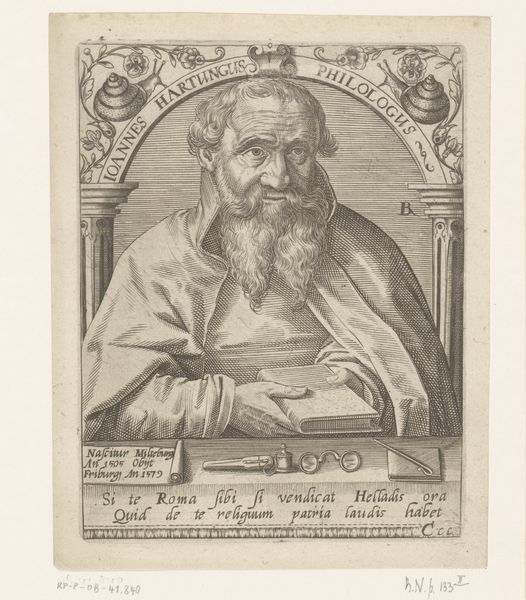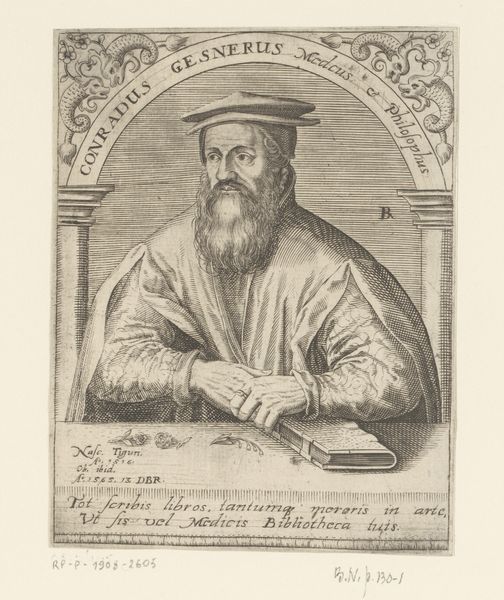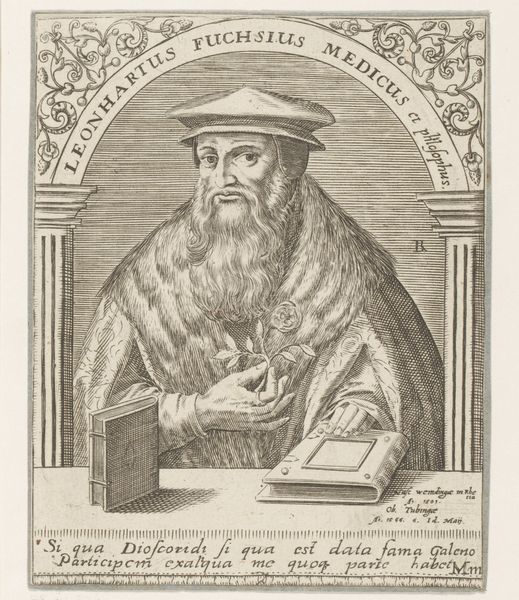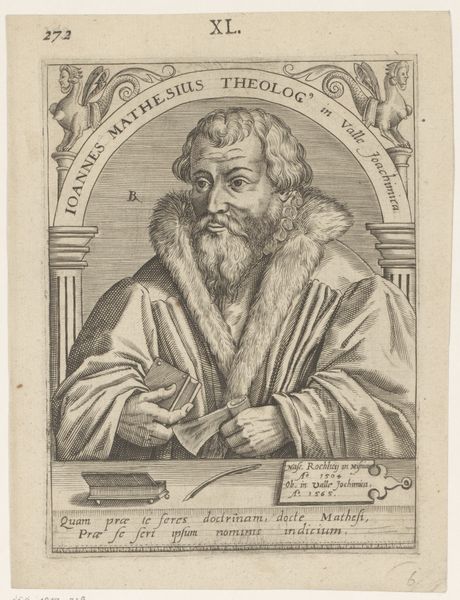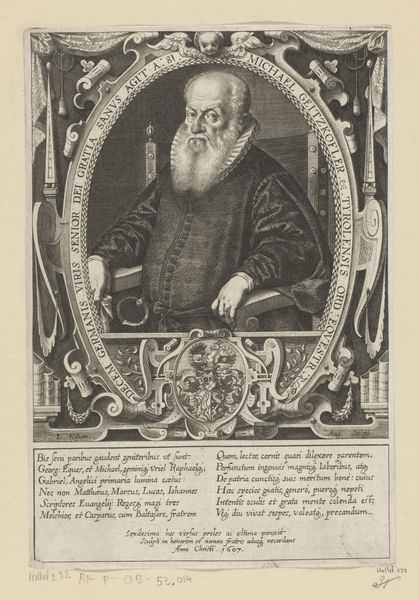
engraving
#
portrait
#
book
#
old engraving style
#
11_renaissance
#
history-painting
#
northern-renaissance
#
engraving
Dimensions: height 144 mm, width 107 mm
Copyright: Rijks Museum: Open Domain
This engraving, now held in the Rijksmuseum, is Robert Boissard's "Portret van Johann Klainau". The print encapsulates the cultural values of its time through symbolism and the conventions of portraiture. Made in the German lands sometime between the late 16th and early 17th century, the image presents Klainau, presumably a figure of local importance. The columns and decorative flourishes denote his status. The book he holds symbolizes knowledge, reinforcing his position within the educated elite. The inscription, "Tu qui Klainavi praesenha numina cernis / Quis mage te felix five beatus erit," translates to "You who see the divine will of Klainau, who could be more fortunate or blessed than you?" This hints at Klainau's perceived virtue and closeness to God, values highly esteemed in that era. To understand this work fully, we would delve into the social and religious history of the region, exploring who Klainau was, what role he played in his community, and how the printing press and portraiture influenced his image. The meaning of the artwork is contingent on these historical contexts.
Comments
No comments
Be the first to comment and join the conversation on the ultimate creative platform.

